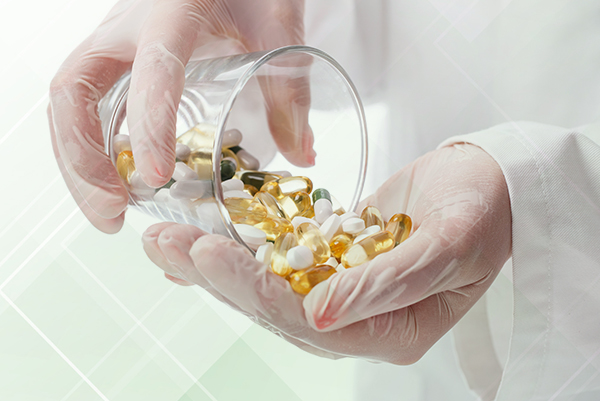
- +86-13363869198
- weimiaohb@126.com

Nov . 11, 2024 03:25 Back to list
Exploring the Chemical Structure and Properties of Curcumin and Its Implications
Curcumin The Golden Spice and Its Complex Chemical Structure
Curcumin, a primary active component of turmeric, has garnered significant attention in the realm of natural medicine and dietary supplements due to its myriad potential health benefits. Characterized by its vibrant yellow color, curcumin is not only a popular spice used in culinary practices but also a subject of extensive scientific research aimed at understanding its chemical structure and biological effects.
Chemical Structure of Curcumin
The chemical structure of curcumin can be denoted by its systematic name, (1E,6E)-1,7-bis(4-hydroxy-3-methoxyphenyl)hepta-1,6-dien-3-one. This complex molecular composition includes two aromatic phenolic rings connected by a β-diketone structure. Curcumin’s structural formula reveals a series of tautomeric forms, predominantly existing in the enol form under physiological conditions.
The structural formula reveals several functional groups, including hydroxyl (-OH) and methoxy (-OCH3) groups, which contribute significantly to its reactivity and interaction with biological systems. The presence of these hydroxyl groups enhances curcumin's antioxidant properties by enabling it to scavenge free radicals, thereby mitigating oxidative stress—a contributing factor in various chronic diseases.
Importance of Curcumin's Structure
The unique chemical structure of curcumin is pivotal to its biological activity. Curcumin’s ability to modulate various signaling pathways in cells is primarily attributed to its structural orientation and functional groups. The diketone moiety plays a crucial role in its interaction with proteins, while the hydroxyl groups are instrumental in forming hydrogen bonds, allowing curcumin to bind with diverse molecular targets within the body.
Numerous studies have demonstrated that curcumin exhibits a broad spectrum of pharmacological properties, including anti-inflammatory, antioxidant, anticancer, and antimicrobial effects. The underlying mechanism for these properties is closely tied to its structural attributes. For example, curcumin is known to inhibit various pro-inflammatory cytokines and enzymes, such as NF-κB and COX-2, which align with its potential in preventing and treating diseases characterized by chronic inflammation.
curcumin chemical structure

Bioavailability Challenges
Despite its promising health benefits, one of the significant challenges with curcumin is its low bioavailability when consumed. This is largely attributed to its poor solubility, rapid metabolism, and quick elimination from the body. Various strategies have been developed to enhance curcumin's bioavailability, such as the use of adjuvants like piperine (found in black pepper) and the formation of nanoparticles or liposomal formulations. These methods capitalize on curcumin's chemical properties to facilitate better absorption and retention in the body.
Research and Applications
Research into the medicinal properties of curcumin has accelerated in recent decades, leading to investigations into its role in preventing and treating conditions such as cancer, cardiovascular diseases, diabetes, and neurodegenerative disorders. For instance, clinical trials are exploring the efficacy of curcumin in cancer therapy, particularly concerning its ability to induce apoptosis in cancer cells and inhibit tumor growth through its multifaceted interactions with cellular pathways.
The exploration of curcumin extends beyond human health; its potential applications in food preservation and cosmetic formulations are also being studied. The antioxidant properties of curcumin make it a valuable ingredient in products aimed at enhancing shelf life while also providing health benefits.
Conclusion
Curcumin serves as a fascinating example of how a simple spice can possess complex chemical structures leading to profound biological effects. Its diverse pharmacological properties, coupled with ongoing research, continue to unravel the mysteries of its mechanism of action. While challenges surrounding its bioavailability remain an area of active study, the potential applications of curcumin in various fields, from medicine to food science, highlight its significance as a compound worthy of exploration. As our understanding of curcumin's chemical structure and its interactions with biological systems deepens, the potential for innovative uses in health and wellness is vast, making it a key player in the realm of natural compounds.
-
Pharmaceutical Intermediates - AI-Optimized Synthesis & Purity
NewsJul.31,2025
-
Top CAS: 79099-07-3 Factories & Wholesale Supplier from China
NewsJul.30,2025
-
High-Quality GS-441524 for White Liquid Type Factories & Suppliers
NewsJul.29,2025
-
High-Quality Pharmaceutical Intermediates for Sale – Reliable Supply
NewsJul.29,2025
-
High-Quality Pharmaceutical Intermediates for Sale - Reliable Solutions
NewsJul.29,2025
-
High-Quality Pharmaceutical Intermediates Supplier for Global Market
NewsJul.28,2025